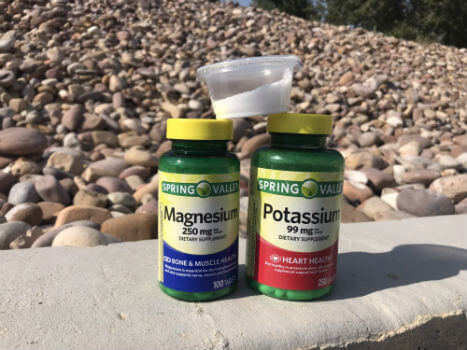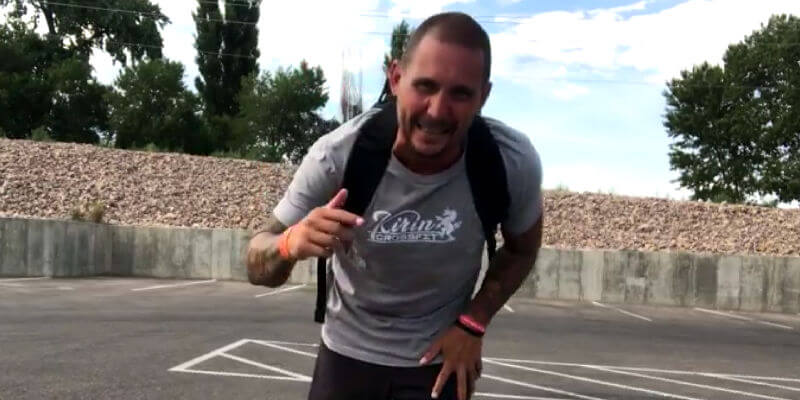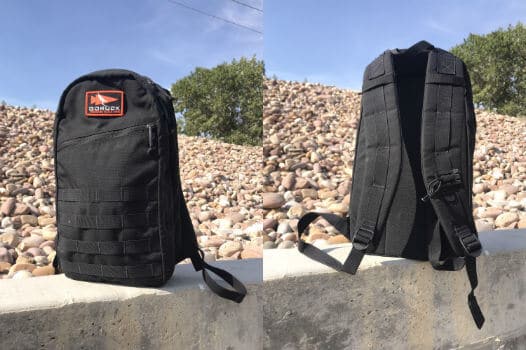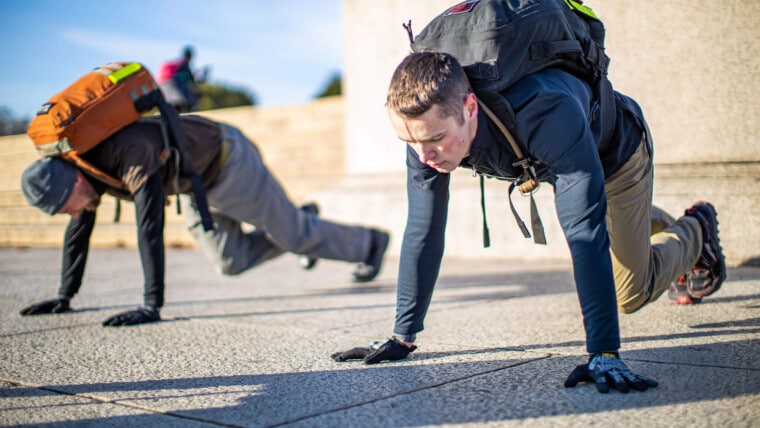This guest post was submitted by Christian Griffith. Christian is an active member of the GORUCK community and is currently running across the United States to prevent & treat child abuse.
Before we get to the tips, here are two things you need to do:
- Go register. (Use code STAR15 to save 15%.)
- Repeat after me, “I can do this GORUCK Star Course 50-Miler.”
There. That’s the hardest part. Maybe repeat it a few times until you actually believe it.
Once you’ve committed to signing up, and convinced yourself you can do it, all that’s left now is putting the gears into motion regarding training, gear, and event-day logistics. As someone currently running across America, 30-34 miles a day, almost every day for 5.5 months, I understand endurance. Most importantly, I understand efficiency for completing very long distances in respectable times. Ultrarunning and long distance rucking are very similar in many ways. You can’t just gut through it. There must be some planning.
5 Star Course 50-Miler Training Tips
1. Train for a 10-hour 40-miler
Train as if you are trying to complete 40 miles in 10 hours. Did you know this only equates to 15:00/miles? Even if you stay only relatively close to this goal, you will crush the 20-hour cutoff at 50-miles.
I suggest 3 rucks a week, distance whatever you want, just get out. Also, 1 or 2 long rucks on weekends, working up to 20-30 mile rucks on those long ones. Extra credit for back-to-back long rucks. This can also be every other weekend. Shake it up. Don’t let the body settle into a routine.
Lastly, throw a plate in a daily ruck and add weight to your daily activities. This is less of an exercise of fitness and more of an exercise of “modifying your norm” so that when wearing a ruck, it feels as normal as a t-shirt.
2. Shuffle 30-seconds per mile
One of the best ways to dramatically increase your mile pace while rucking is “ruck run.” We call it a run, but it’s really a fast shuffle, at a high cadence, with a shortened stride. With weight on your back, your feet should always …always, always, always, be under your center of mass to reduce the likelihood of “lever” injuries (knees, ankles, IT band, etc…)
During your training, make sure you are “ruck shuffling” a minimum of 30-seconds per mile. Depending on your level of fitness, you can shuffle longer for even better results, but make sure you pick an interval that is as easy for you after 20 miles, as it was mile 1. Those who have joined me on my run across America have experienced this first-hand. As of this writing, I have run 2,140 miles, and implementing intervals BEFORE I needed them, is the only way I could have gotten this far.
Let’s say you can complete 2.5 miles per hour, just a tad faster than 30:00 miles, just normal rucking. Well, the good news is, you would still be on pace for a finish, but the even better news is that by adding the 30-second shuffle, you could get closer to 3.5 miles an hour, which gets you in after only 14-15 hours on the course.
3. Use the smallest ruck possible
Since this is GORUCK we’re talking about, almost no one will show up with another product. So, consider the smallest GORUCK option possible while taking into consideration that you will be wearing it for up to 20 hours. I once did a Tough event, Surfhog’s of course, with only a 10L Bullet and it actually sucked worse than had I worn my GR0. The tiny straps on the 10L dug into my shoulders after such a prolonged period of wear.
I plan to use a 15L bullet at Star Course in Jacksonville.
4. Don’t stop to eat and drink
Once these breaks start, they become far too easy to keep doing. You don’t want to be out there the whole 20 hours, but even if you do end up being out there for 20 hours, you can still easily nourish and hydrate yourself for that period.
We have a saying in the endurance community, “beware of the chair.” No moving means no mileage is clicking off …but time is. Even if you are walking slowly and eating, that’s better than a picnic in the shade.
Breaks will KILL your time, stress you out, and getting the body going after prolonged breaks can be challenging, making you stay still longer.
As for food, eat what you would normally eat. There is no “magic food” on the event day or the night before. Just eat what you normally eat. This will also prevent excessive bathroom breaks.
5. Electrolytes. Not Gatorade.
Gatorade, Powerade, and other sugary yumminess are delicious but lack the quantity (and quality) of electrolytes for an effort like Star Course.
You can pay for Endurolytes (Hammer Nutrition) or other similar products, or, you can do what I do and just buy the minerals you need – salt, magnesium, and potassium. All inexpensive and you can tweak dosages to see what works best for your individual body and your climate, conditions, and terrain.

There ya go. Follow these 5 tips and it will dramatically increase the likelihood of a Star Course 50-Miler finish.
HEY -> Did you appreciate Christian’s article? Show him some love and go donate to Run2Heal. He’s working to raise $1M to prevent and treat child abuse. Surely you can kick in a few bucks to help him out.









11 Replies to Five Tips to Crush the GORUCK Star Course by Christian Griffith
I’m currently stumbling through a loose training regimen for the Cincinnati STAR Course. Thanks Ryan and Christian for the tips!
no problem. Good luck!
Great advice Christian!! I was a volunteer for the Chicago Star Course and the successful participants did just as you mentioned during the event. Short breaks and maintained a steady pace throughout. Only nutrition when necessary.
The only ‘long’ breaks were for foot care after a thunderstorm in the early morning hours.
Shoes: most likely, foot care was needed for boot wearers, yes? If one wears normal shoes, they will fair much better, wet or not wet, but especially wet.
Does GR still offer the 15L Bullet?
They started producing it again, but the first run already sold-out, I heard.
Did the DC course, and while our team did finish breaks are what really eat into our time. Plus once we stopped for bathroom time the legs started to stiff up. So can’t stress this enough for anyone attempting the course stay mobile as once you stop it gets harder to start back up again.
Excellent! Thanks, Christian! Following your progress. Inspiring work, man.
Christian,
You say use the smallest ruck possible. I’ve used a GR1 and it just doesn’t seem as comfortable as the GR2. The bullet straps are a bit narrow for any length of time or distance.
What about using a larger ruck and factoring that in as part of the weight?
Thoughts?
I’ve the same question. I’ve read where some people say carry the weight high. Small Rucks. What if you’re over 6’? I have the GR1 and the GR2 but am not sure which is right for the hike.
Always good to get advice before such a huge test/task.
Having not rucked under weight since my time in the service, (got out in 2007) & 47, I’m optimistic at my chances of completing the Jax beach event.
Unless I get in another event inbetween, this will be my second Go Ruck event. (I am addicted)
Thank you again…. Semper Fi brothers!
Comments are closed.
GORUCK Coyote Ruck Dye Guide
GORUCK Ballistic Trainers – Long Term Review
First Look Review: GORUCK x Carryology “Berserker” GR1
Which GORUCK Bag Should I Buy?
Which GORUCK Bag Should I Buy?
GORUCK Rucker 4.0 Review
GORUCK Simple Sandbag & Sandbag 2.0 Review
GORUCK Weight Vest Review (with Video)